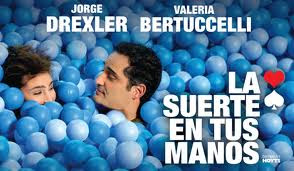By Neil Leadbeater
Author: Luis BenÌtez
Translated by Elizabeth
Auster with versions by Beatriz Olga Allocati
Publisher: Littoral Press,
Suffolk, England.
Trade Paperback £9.99,
July 2013
ISBN: 978-0-9558937-8-0
Luis
BenÌtez
is a poet, essayist and novelist living in Argentina. He is a member of the
Iberoamerican Academy of Poetry, New York, USA, the International Society of
Writers, USA, the World Poets Society, Greece, and the Advisory Board of Poets
Press, India. His work has brought him international recognition and he has
been the recipient of many prestigious awards including the La Porte des PoÈtes
International Award (Paris, 1991), the Primo Premio Tusculorum di Poesia
(Italy, 1996) and the International Award for Published Work “Macedonio Palomino”, (Mexico, 2008). He is the author of some 36 books
(poetry, essays and narrative) published in Argentina, Chile, Italy, Mexico,
Romania, Spain, Sweden, USA, Venezuela and Uruguay.
Over
the years, many of his poems have appeared in small press magazines and
journals in the USA and the UK but this is the first time that a selection of
his work, (46 poems taken from
nine separate books), has been published in the United Kingdom.
BenÌtez
belongs to the so-called Argentinian generation of 1980, the generation that
meant in part to disassociate itself from the immediate influences of writers
such as Pablo Neruda and CÈsar Vallejo in order to search out new
possibilities including influences from outwith their native countries. In the
case of BenÌtez,
whose poetry may be said to be truly cosmopolitan, it was a question of carving
out a new identity variously composed of many different facets. His poetry is rooted
in European literature, classical mythology, history, philosophy and geography.
His unique handling of this material is what makes him such an original voice.
In particular, the persona of the author is never to the fore, it is as if the
poet takes a back seat and lets his universal themes take centre stage.
In
This Morning I Wrote Two Poems Benitez
concerns himself with the craft of writing - where does the Muse come from and
why is it that the finished object is more than the
sum of its component parts? Always modest about his own achievements and wise
enough to know that the perfect poem is in all probability an impossible thing
(but worth pursuing), he wonders
About
the men who have said it better
and
are now dead
The
poem hints at the length of time that it can take for a work of art to come to
full maturity, and how, at the last, it can have a transformational effect
which can be out of all proportion to its existence on the page.
Several
writers are celebrated in this volume. There are poems addressed to Vallejo,
Pound, Lao-Tse, Keats, Schwob and Rimbaud. The title of his poem To Deprive
Death of It’s Arrogance carries an echo of Dylan Thomas’s poem And Death Shall Have No Dominion. The reference is no accident. Dylan Thomas was, and
continues to be, a great influence on BenÌtez. Benitez has said
of him, “he was my master”.
In
KustendjÈ,
By The Black Sea the whole poem,
which is a meditation on change, revolves around the central figure of another
writer from the past, this time Ovid, and his work Metamorphoses. The reference is to the time when the Roman Emperor
Augustus banished Ovid from his native Rome to a period of exile in Constanza.
Again, as with so many of the poems in this collection, there are several
layers of meaning working their way into the reader’s conscience at the same time. In this case it is the
skilful interplay between past and present: the ever-changing events of
history.
For
me, it is the poem The Astonishing
Lives that provides the key to the
whole collection. These are the men and women who have travelled the huge
country of distance to show us their
many-coloured fabrics, their words -
they are the quiet influences from the past that people our creative spirit and
are the source of this poet’s own original work.
Translation
is never an easy task, especially in relation to poetry. Unfortunately, the translation in this
book is at times uneven and in need of some fine-tuning in order to enable the
reader to gain a proper comprehension of the text but this should not detract
from the opportunity that this publication brings to enable speakers of English
to gain an appreciation of a selection of very fine poems that would not
otherwise be available in the United Kingdom.




+&+Octavio+Moreno+(Laurentino)+Photo+credit+Felix+Sanchez).JPG)







+&+Octavio+Moreno+(Laurentino)+Photo+credit+Felix+Sanchez).JPG)


